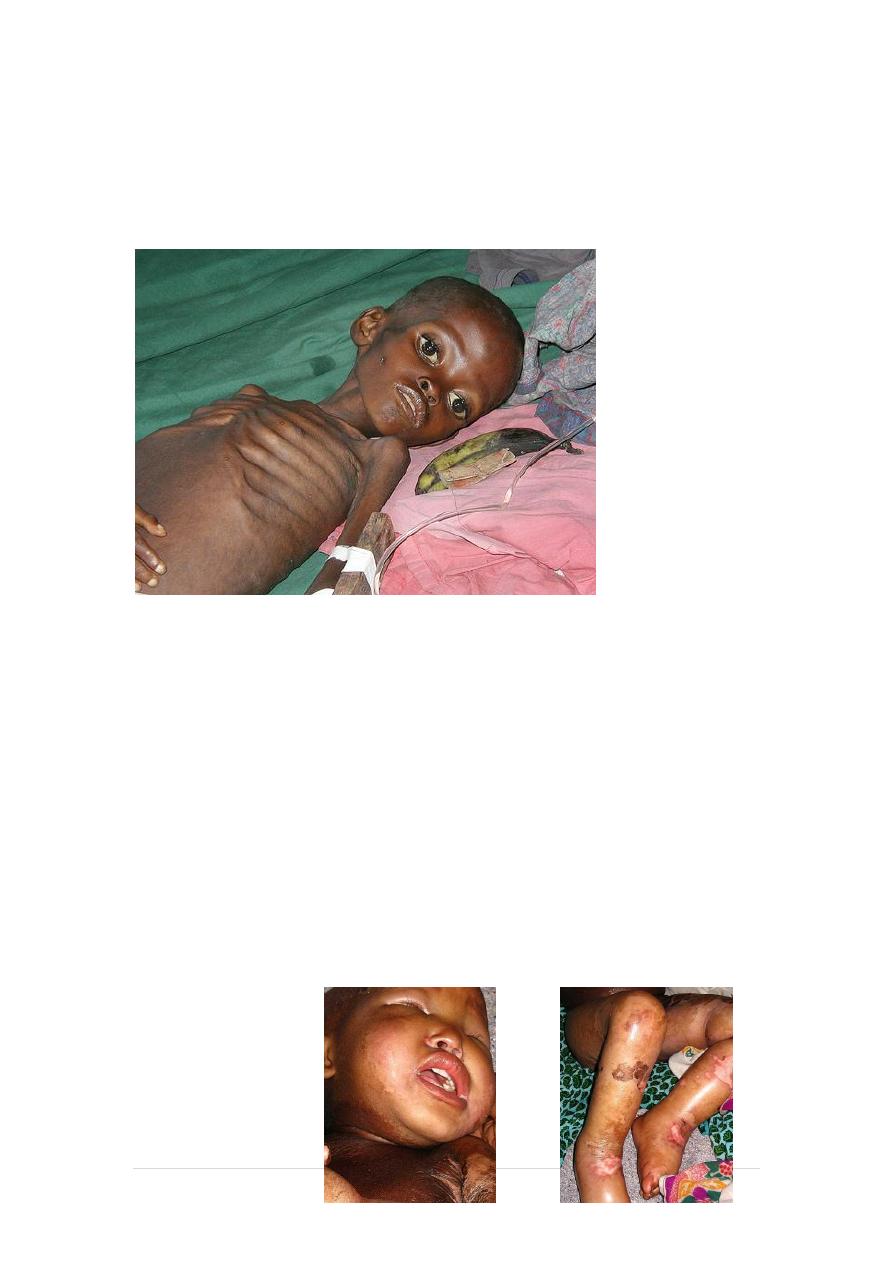
P a g e
| 1
Biochemistry
Lec: 4 Dr. Ahmed Dalalbashi
Fat in the diet:
The amount of fats in the diets varies greatly. In many rich countries fats
usually contributes 35-45% of the total energy, whereas in poor countries
the figure is 15% or even lower.
Since there is evidence of increased susceptibility to coronary heart
diseases among individuals with elevated levels of cholesterol &/or TG;
attention is focused on those food constituents which appear to affect the
level of these 2 substances (these are the total fat and sugar intake and the
proportion of saturated to polyunsaturated fatty acids and cholesterol).
However it is advisable to use diet-giving energy from fat of about 20%.
This is especially important if the person has reached middle age and it is
important to remember that it is healthier to substitute animal fat with
vegetable oils in the prevention and treatment of atherosclerosis.
Anyhow a high fat intake is necessary for very active people spending
over 4000 Kcal/day.
On the other hand complex carbohydrate rather than Simple sugars
should replace the fat in the diet when weight reduction is required in
order to reduce serum TG levels.
So the foods selected will need to include more cereals grain, legumes,
vegetables, fish and vegetable oils and less animal fat and sugar.
Malnutrition:
Estimates indicated that there is a billion and half human in the world
today suffering from severe, moderate, or mild malnutrition.
Some children will die from malnutrition; larger number will suffer
physical and possibly mental retardation and will be more susceptible to
infectious diseases.

P a g e
| 2
Protein- Energy (Protein-calorie) malnutrition (PEM
or PCM);
PEM describe a spectrum of clinical disorders.
At one end is Marasmus which is due to continued restriction of dietary
energy and proteins as well as other nutrients.
At the other end is Kwashiorkor, which is due to a quantitative and
qualitative deficiency of protein but in which energy intake may be
adequate.
In between these 2 syndromes are forms in which the clinical features are
due to varying combinations of deficiency of protein and energy together
with deficiencies of minerals and vitamins and with associated infections.
PEM is the most important public health problem in underdeveloped
countries in the world today.
It is largely responsible for the fact in many areas up to ½ the children
born do not service to the age of 5 years. Death rates in these children
may be 20-50 times the rate in rich communities in Europe and America.
Marasmus:
Marasmus is more likely to develop in children under one year of age
when breast feeding fails or not continued for sufficient period of time,
followed by dirty artificial feeding with very dilute milk or milk products
given in inadequate amount thus the diet is low in both energy and
proteins.
The infant with Marasmus is more than 40% below standard body weight.
There is no subcutaneous fat, muscle wasting and diminution of length is
usually clear. Edema is not noticeable.
The GIT is also affected and so watery diarrhea and bulky acid stool may
be found and if infective gastroenteritis is added the diarrhea is severe. In
addition the skin and mucous membrane are dry and atrophic.

P a g e
| 3
The Marasmic infant looks like a little old man with a big head and huge
eyes, wrinkled face and tiny body.
Such infants are particularly susceptible to infectious diseases and their
mortality is high.
Kwashiorkor:
The name is African means the disease the older baby gets when the next
one is born. In this case the presence of edema is clear. It is due to severe
protein deficiency but in which energy intake may be adequate.
Kwashiorkor is an acute condition of short duration in which recovery or
death occurs relatively rapidly.
The mortality rate even among hospitalized children is high. The first and
essential sign is the failure of growth.
The child’s skin shows dermatitis consists of areas of pigmentation and
other areas of depigmentation. Ulcers occur over pressure points and deep
cracks in skin folds.

P a g e
| 4
The GIT is also affected and so watery diarrhea and large semisolid acid
stool is shown.
The muscles are usually wasted as a result many children regress in their
physical development.
Anemia is usually present and may be severe. Some children have
tremors resemble to Parkinsonism.
Treatment:
Specific therapy consists in providing the child with sufficient amount of
protein and energy and in controlling infection.
Milk is excellent for this purpose. Many children cannot tolerate whole
milk, as diarrhea is increase (due to the presence of fat). So they are
treated with skimmed milk.
Another problem with milk is its lactose content, as when the GIT is
seriously damaged is unable to produce lactase; this result in fermentation
of lactose by bacteria of the bowel and so diarrhea may increase.
In this condition a case in preparation must be used in addition to glucose
as a source of energy and few quantities of salt is also added.
Fortunately the digestive power improves rapidly with high protein
intake.
